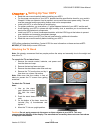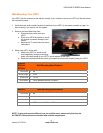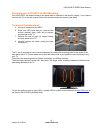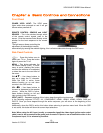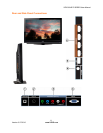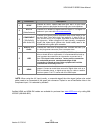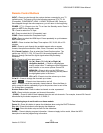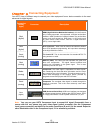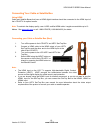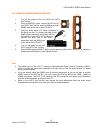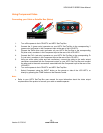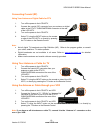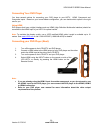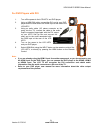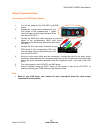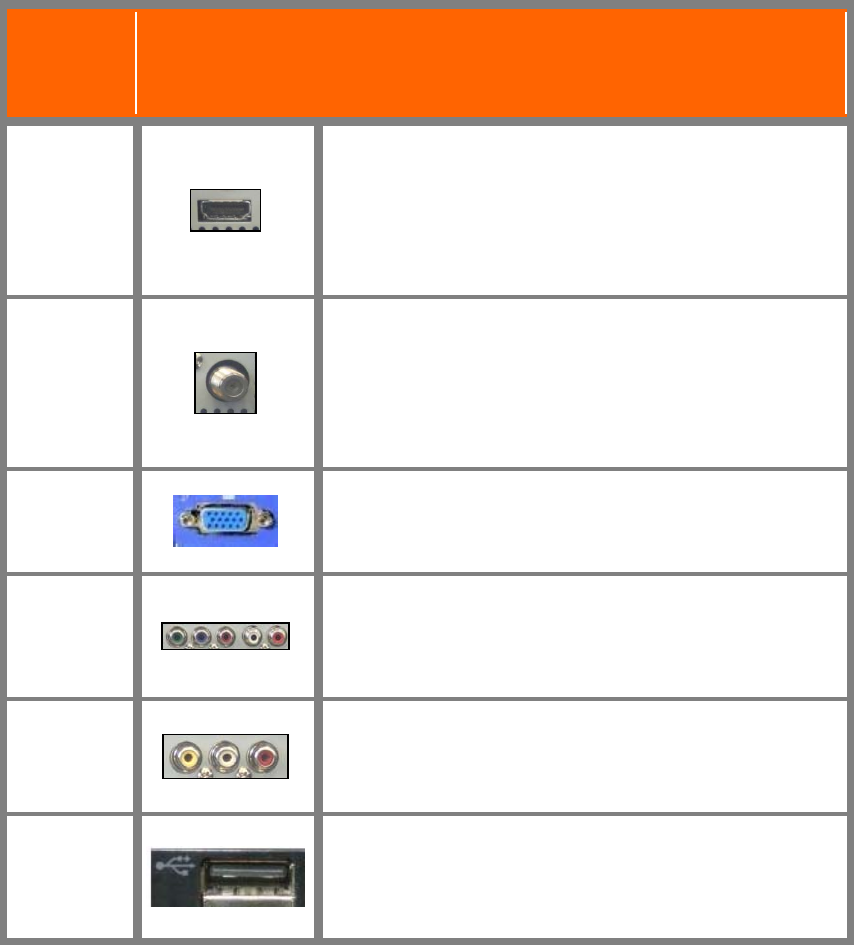
VIZIO 60HZ E SERIES User Manual
15
Version 3/17/2010 www.VIZIO.com
Chapter 3 Connecting Equipment
Your HDTV has six different ways to connect your video equipment from a basic connection to the most
advanced for digital signals.
Connection
Quality
(type)
Connector Description
Best
(digital)
HDMI (High-Definition Multimedia Interface). It is the first and
only industry-supported, uncompressed, all-digital audio/video
interface. HDMI provides an interface between any audio/video
source, such as a set-top box, DVD player, or A/V receiver and
an audio and/or video monitor, such as a digital television
(DTV), over a single cable.
Best
(digital)
- - - - - - - - -
Good
(analog)
DTV Coaxial RF. When used for MPEG2 encoded bit streams
from ATSC broadcast programming, this input takes advantage
of the High Definition content.
- - - - - - - - - - - - - - - - - - - - - - - - - - - - - - - - - - - - - -
TV Coaxial RF. This is the connection for standard NTSC TV
using antenna or cable.
Best
(analog)
RGB PC (VGA). This video input has separate red, green and
blue color components. The signal carries horizontal and
vertical sync information on the green signal. This is most
commonly used for PC input.
Better
(analog)
Component. The video signal is separated into three signals,
one containing the black-and-white information and the other
two containing the color information. This enhancement over S-
Video takes advantage of the superior picture provided by
progressive scan DVD players and HDTV formats.
Good
(analog)
Composite. The complete video signal is carried through this
single pin connector. This is the most commonly used video
connection.
Best
(digital)
USB (Universal Serial Bus). USB is an interface port designed
to connect storage devices holding data (FAT32 format: JPEG
for image) files without a need to power off the host (TV) unit.
Note: You can use your HDTV Component input to accept A/V signal (Composite) from a
source with A/V out, please plug your video signal (yellow connector) into the Component
input (green connector) and match up the audio connectors (R and L) for the sound. Expect to
see a black/white video in the Component input, if it is selected by accident.



